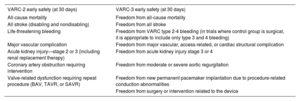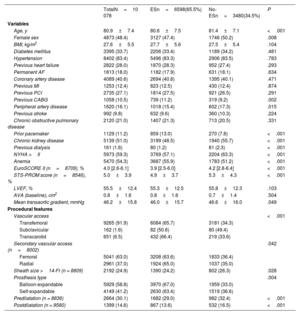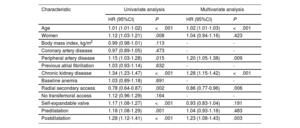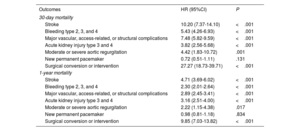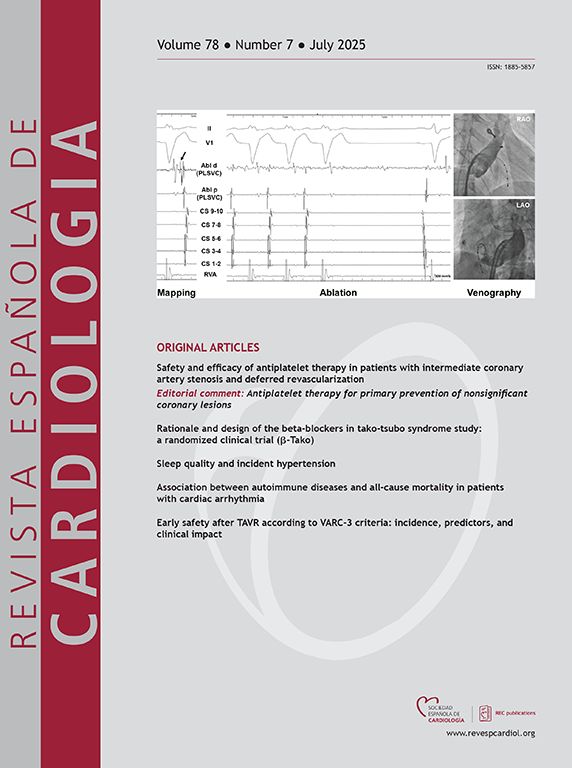
The Valve Academic Research Consortium (VARC)-3 definition of the early safety (ES) composite endpoint after transcatheter aortic valve replacement (TAVR) lacks clinical validation. The aim of this study was to determine the incidence, predictors, and clinical impact of ES after TAVR as defined by VARC-3 criteria.
MethodsWe performed a multicenter study including 10 078 patients with severe aortic stenosis undergoing transarterial TAVR. According to VARC-3 criteria, ES at 30 days was defined as freedom from all-cause mortality, stroke, VARC type 2-4 bleeding, major vascular, access-related, or cardiac structural complications, acute kidney injury stages 3-4, moderate or severe aortic regurgitation, new permanent pacemaker implantation, and surgery or intervention related to the device. Baseline, procedural, and follow-up data were prospectively collected in a dedicated database.
ResultsES was achieved in 6598 patients (65.5%). The main factors associated with a lack of ES were the occurrence of type 2-4 bleeding (18.9%), and new pacemaker implantation (13.6%). Advanced age, peripheral artery disease, chronic kidney disease, and balloon postdilation were associated with an increased risk of no-ES (P<.01 for all). Failure to achieve ES was associated with higher all-cause mortality up to 1-year after TAVR (HR, 3.17; 95%CI, 2.76-3.65; P<.001).
ConclusionsVARC-3 ES was not achieved in up to one-third of contemporary TAVR patients, which was associated with worse mid-term outcomes. The factors associated with increased risk were advanced age, baseline comorbidities, and some procedural features (postdilation). These findings highlight the importance of continued efforts to minimize the risk of TAVR-related procedural complications.
Keywords
Identify yourself
Not yet a subscriber to the journal?
Purchase access to the article
By purchasing the article, the PDF of the same can be downloaded
Price: 19,34 €
Phone for incidents
Monday to Friday from 9am to 6pm (GMT+1) except for the months of July and August, which will be from 9am to 3pm




